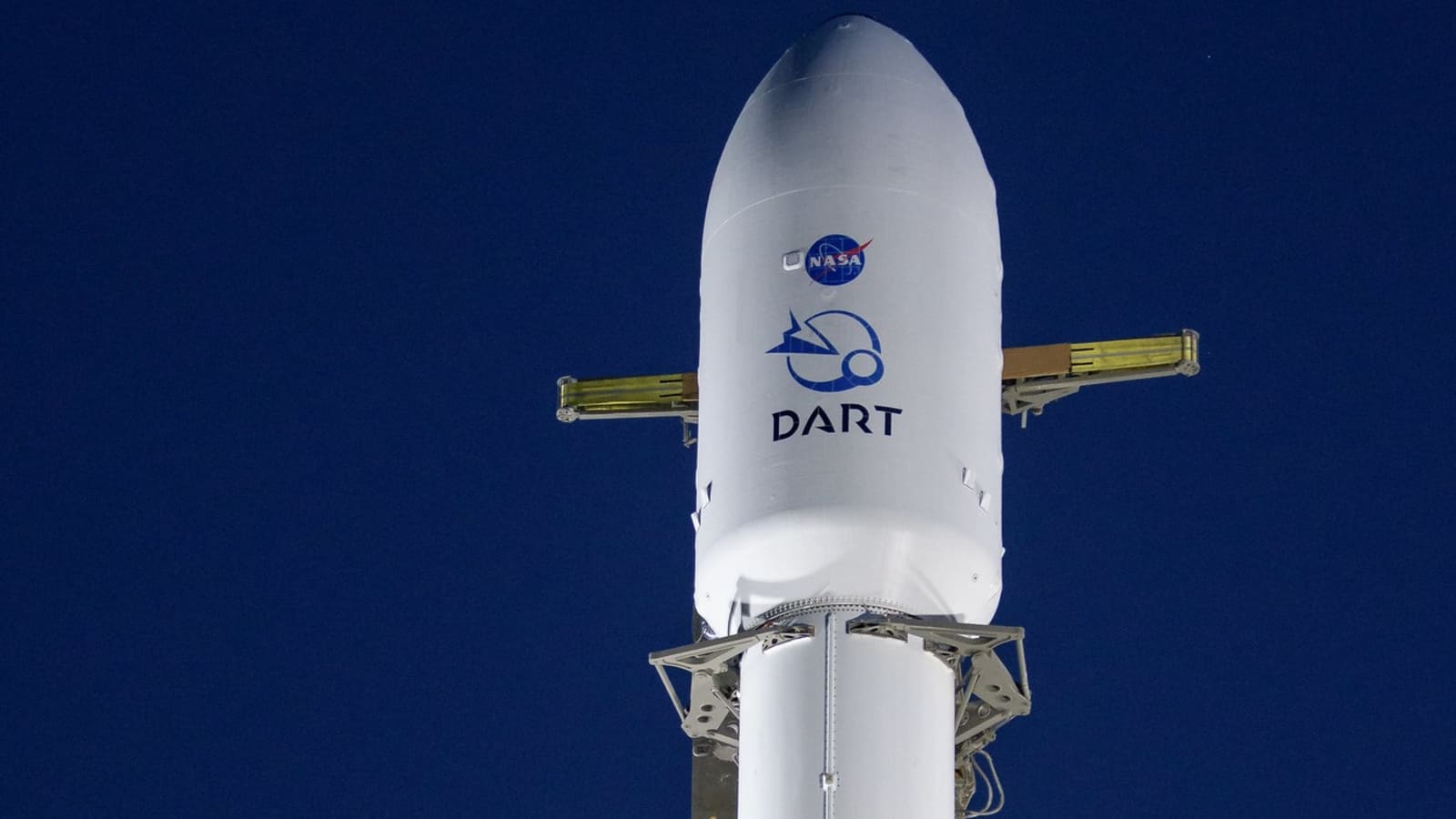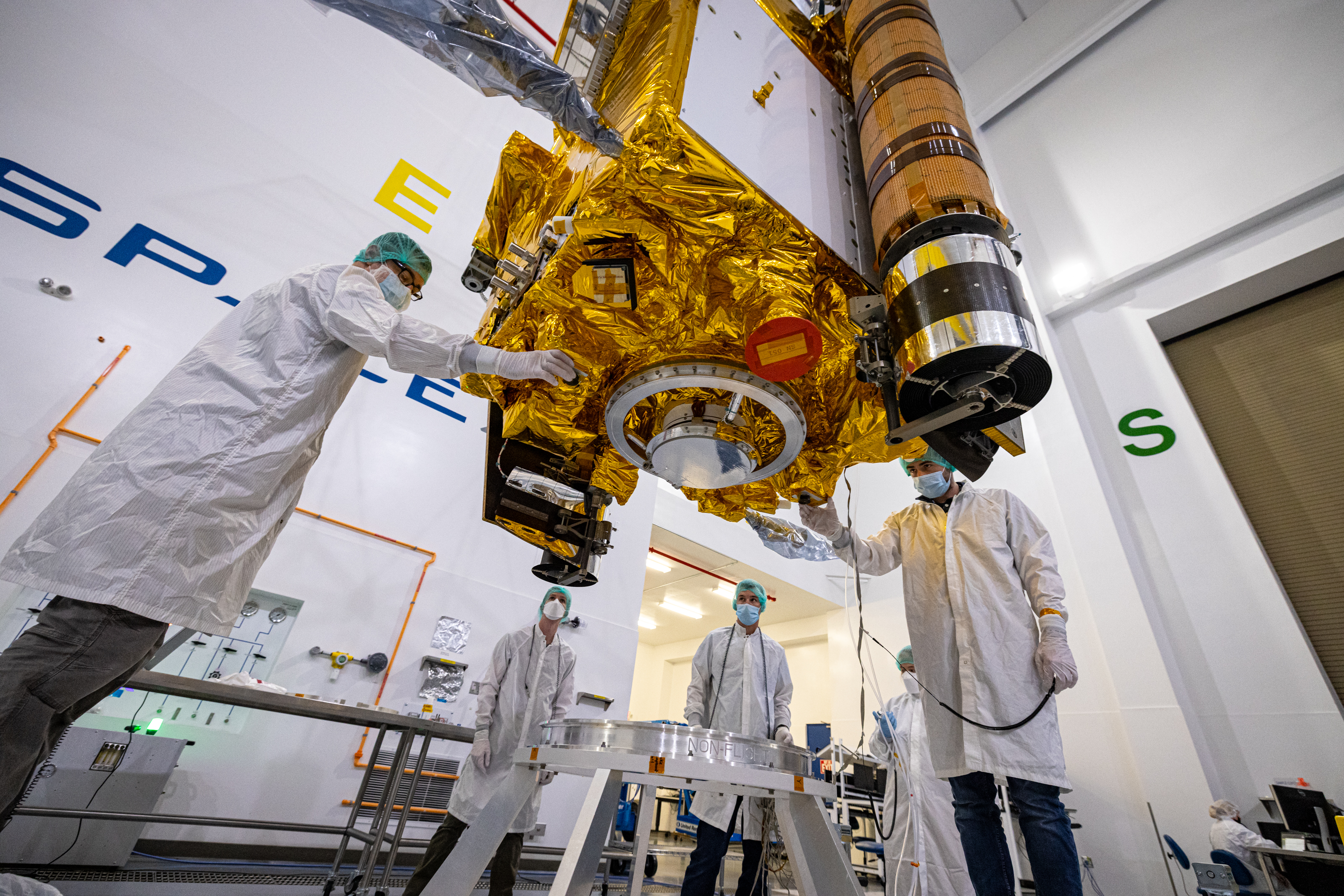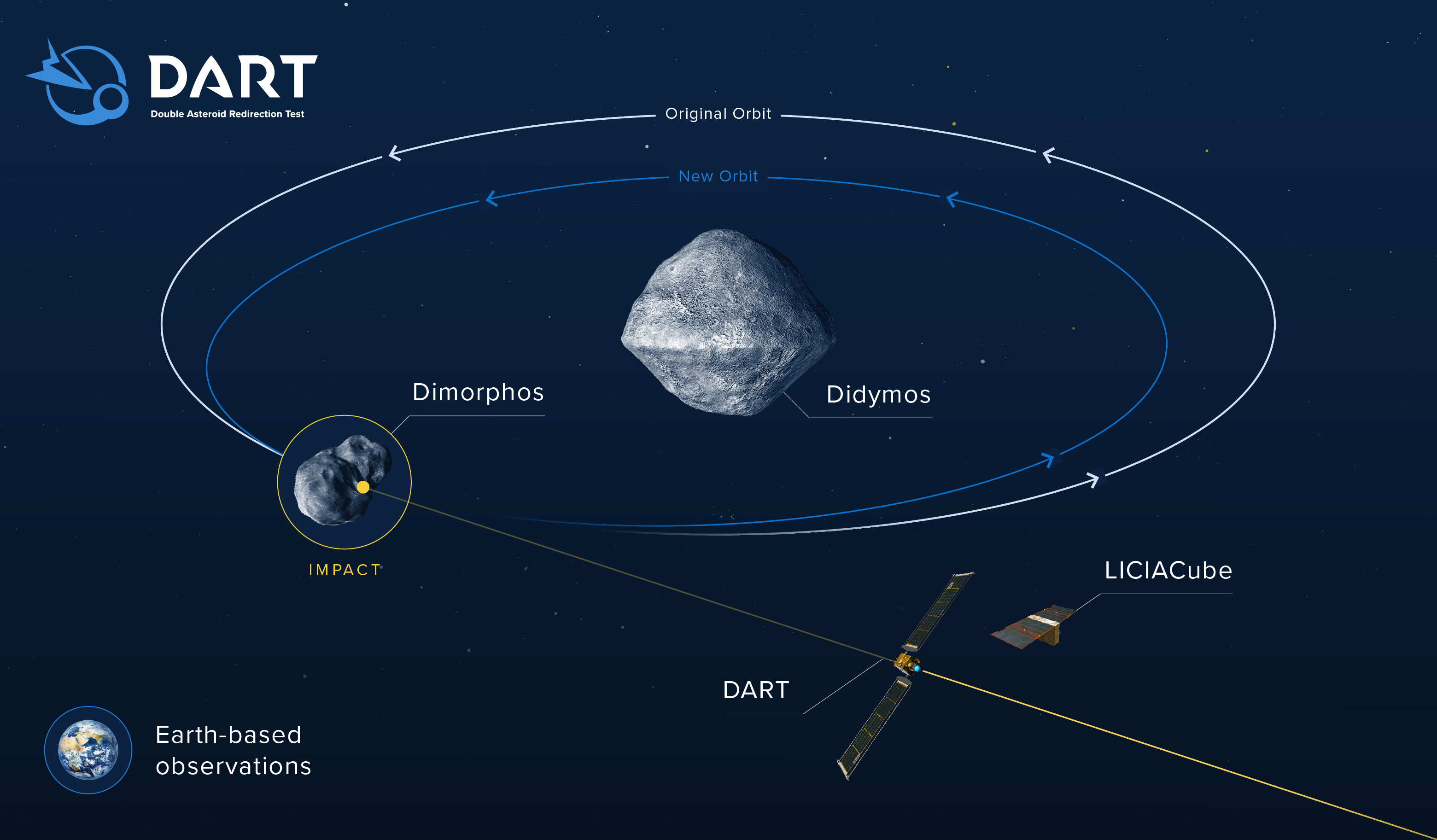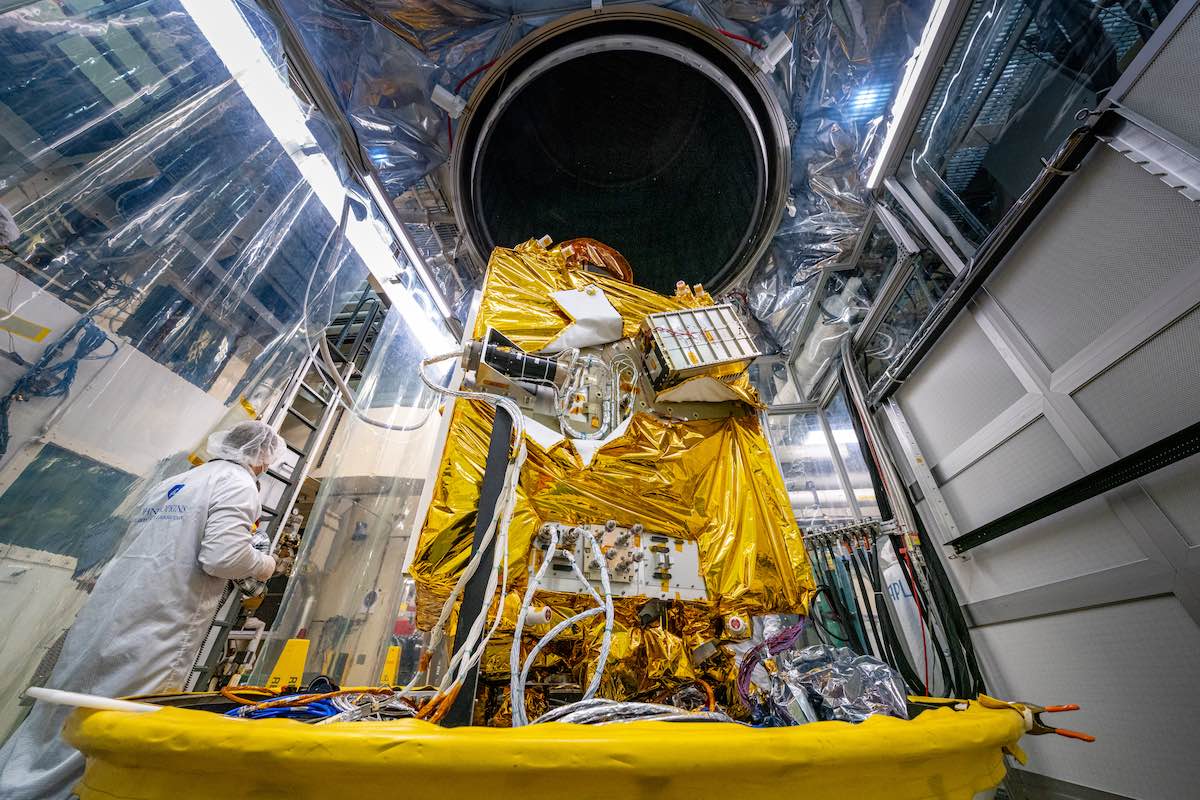

Cosmox Blogs
DART Mission: Smashing Astroids
On 19th June 2004, Scientists of KITT PEAK National Observatory were observing an asteroid’s path in space and during the observation, they noticed that 99942 Apophis can collide with Earth by 2029. They predicted that the collision of this asteroid could emit the energy of 1000 nuclear bombs, which can destroy the earth in minutes which means another Mass Extinction thanks to the advancement of technology that now we can change the path of an asteroid and its speed which is coming towards the earth. It may sound a bit impossible but NASA has already done it. There are currently over one million known asteroids according to NASA. They vary in size, shape, and composition and move in different orbits around the sun. Some even cross paths with Earth's orbit, but typically don't pose a threat to our planet. But asteroid impacts have occurred throughout Earth's history. Scientists believe an asteroid impact led to the extinction of dinosaurs.
The DART mission (Double Asteroid Redirection Test) is a NASA mission (roughly $325 million mission) designed to test the feasibility of deflecting an asteroid's trajectory by colliding a spacecraft with it. The mission was set to launch on November 2021 and hit the asteroid on September 26, 2022, which targeted the asteroid Didymos, a binary asteroid system consisting of a main asteroid about 780 meters in diameter and a smaller asteroid about 160 meters in diameter orbiting around it. The DART spacecraft weighs about 500 kg, was launched using a Falcon 9 rocket, and was equipped with a high-speed camera, a LiDAR (Light Detection and Ranging) system, and a small satellite called LICIACube that will be released just before the spacecraft impacts the smaller asteroid. The LICIACube will fly by the asteroid and take measurements of its surface and environment before and after the impact.

The DART spacecraft will travel to the Didymos system and collide with the smaller asteroid at a speed of about 6 km/s (14,000 miles per hour), which will change its velocity by a small amount, about 1 millimeter per second. But navigating a small spacecraft leaves little room for error. You can't sit there with a joystick and steer yourself in that fast. This is why NASA created SMART Nav, a new technology system that allows the spacecraft to direct itself entirely on its own, without human intervention. The impact will be observed and measured by Earth-based telescopes and other spacecraft in the vicinity of the asteroid system. Other techniques include using gravity tractors, which involve using the gravitational force of a spacecraft to slowly change the trajectory of an asteroid, and nuclear explosions, which involve detonating a nuclear weapon near an asteroid to change its trajectory. However, the kinetic impactor technique is currently the most feasible and cost-effective technique for deflecting an asteroid's trajectory.

One of the main objectives of the DART mission is to test the feasibility of the kinetic impactor technique for deflecting an asteroid's trajectory. The mission will provide valuable data on the effectiveness of this technique, which could be used in the future to prevent a potential asteroid impact on Earth. If a large asteroid were to be heading towards Earth, deflecting its trajectory by even a small amount could potentially save millions of lives. In addition to testing the kinetic impactor technique, the DART mission is also expected to provide valuable data on the internal structure of the asteroid. The impact and subsequent flyby of the LICIACube will reveal information about the asteroid's composition and formation, which will help scientists better understand the nature of asteroids and other small bodies in our solar system.
Overall, the DART mission is an important step in developing planetary defense technologies and preparing for the possibility of an asteroid's impact on Earth. With its cutting-edge technology and scientific objectives, the DART mission promises to be a significant milestone in our understanding of asteroids and their potential impact on our planet.

In October 2024, the European Space Agency will launch a mission called Hera which will reach Dimorphos in 2026 to conduct detailed post-impact surveys on the asteroid. Hera will advance scientists understanding of Dimorphos' internal properties and the outcome of the DART test.
"We don't wanna add to people's anxieties, we want to demonstrate that we can handle asteroid deflections" ~ Andy Rivkin (DART Investigation Team Lead, Johns Hopkins Applied Physics Lab)

Cosmox Blogs
A non profit organization that works on writing and delivering blogs on cosmology, natural sciences & environment, so that people can learn more about it. We even run a forums page, where our users interacts with each other and discuss about Cosmology, Natural Sciences & Astronomy. We even run an instagram and a youtube channel with podcasts.